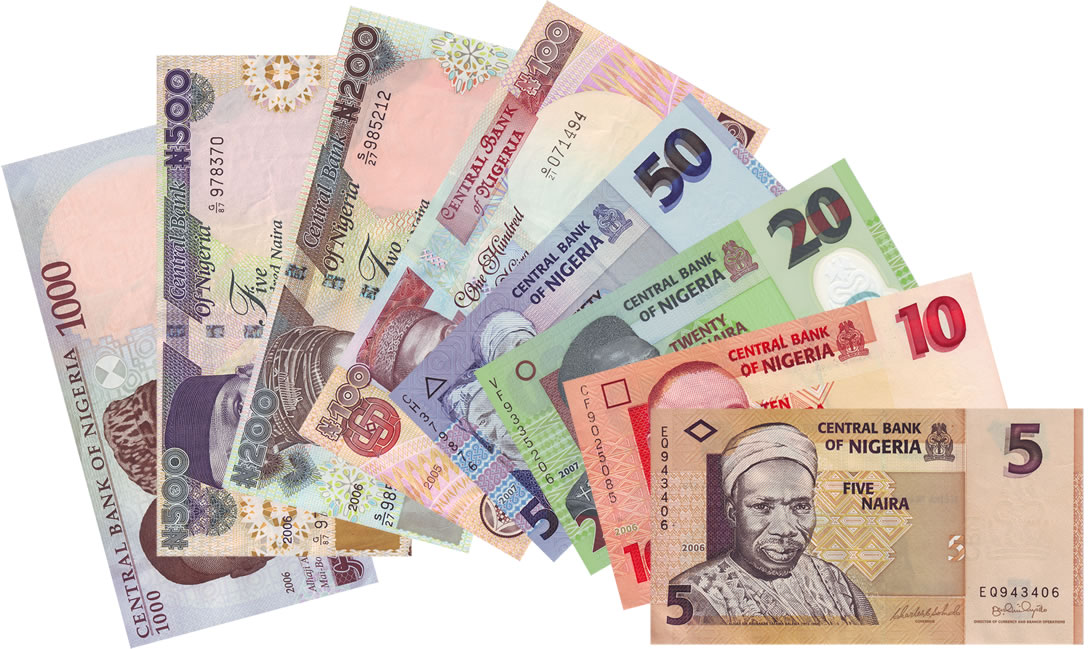Monday’s stoppage of foreign exchange sales to Bureau De Change operators by the Central Bank of Nigeria failed to lift the naira on Tuesday as the currency exchanged for 300 against the United States dollar in Kano, 290 in Lagos and 292 in Abuja.
Financial experts said the naira would decline further, while private sector operators described the move as a welcome development.
The ban was announced on Monday, when naira trading at 285 against the dollar at the parallel market from 278 on Friday.
The Acting President, Association of Bureau De Change Operators, Alhaji Aminu Gwadabe, told one of correspondents in a telephone interview that the currency traded against the greenback at 300, 290 and 292 in Kano, Lagos and Abuja a day after the CBN announcement.
“There is cut of (dollar) supply to the market. The BDC sub-sector has been murdered. We are not coping. The naira is going to head northwards. There is no solution in sight,” Gwadabe lamented.
The Head of Investment Research, Afrinvest West Africa Limited, Mr. Ayodeji Ebo, said the stoppage of forex sale to the BDCs meant that the CBN wanted everybody to apply to the banks for dollars.
He stated, “But we feel the pressure now will move from the BDCs to the parallel market. We will see significant spike in the value of the naira at the parallel market because the little supply to the BDCs have also helped to cushion the demand at the parallel market.
“It will further compound or increase the spread between the parallel market and the interbank market. So, it will also increase round-tripping and unethical practices within the financial system.”
On the lifting of the ban on cash deposits into domiciliary accounts, Ebo said, “I am still sceptical about how this will work except they are also assuring us that if you deposit it, you can consummate business with it.”
A professor of financial economics at the University of Uyo, Akwa Ibom State, Leo Ukpong, said, “I don’t think the stoppage of dollar sale to the BDCs will solve the problem. The currency will depreciate some more.
“This move will make the naira to weaken more as demand for dollar will skyrocket because of the short supply.”
Members of the organised private sector, however, applauded the CBN for the stopping the sale of dollars to the BDCs and lifting the ban on cash deposits into domiciliary accounts.
The President, Manufacturers Association of Nigeria, Dr. Frank Jacobs, said industrialists had earlier kicked against the funding of the BDCs by the central bank, adding that with the development, the forex could be channelled towards funding the real sector in terms of importation of raw materials.
On the removal of the restriction of cash deposits into domiciliary accounts, Jacobs said manufacturers were still waiting for more clarification as to how the money deposited could be utilised by the customers.
The Director-General, the Nigerian Association of Chambers of Commerce, Industry, Mines and Agriculture, Mr. Emmanuel Cobham, said the forex sale ban was a welcome development.
According to him, although the BDCs are necessary in the economy, they are licensed entities and should, therefore, source for their own funds.
Also speaking on the matter, the Director-General, Lagos Chamber of Commerce and Industry, Mr. Muda Yusuf, lauded the forex policy review, noting that it had addressed the concerns of economic operators.
According to him, it is a source of worry that the CBN continues to maintain its official exchange rate at N199 to the dollar at a time of dwindling forex inflow.
“The pressure on the official window will persist. The risk of round-tripping and distortions in the foreign exchange market will consequently remain high,” he said.
Punch

 Naira4 weeks ago
Naira4 weeks ago


 Naira4 weeks ago
Naira4 weeks ago




 Naira4 weeks ago
Naira4 weeks ago




 Naira3 weeks ago
Naira3 weeks ago
 Commodities4 weeks ago
Commodities4 weeks ago


 News4 weeks ago
News4 weeks ago
 Travel4 weeks ago
Travel4 weeks ago




 Naira3 weeks ago
Naira3 weeks ago






















